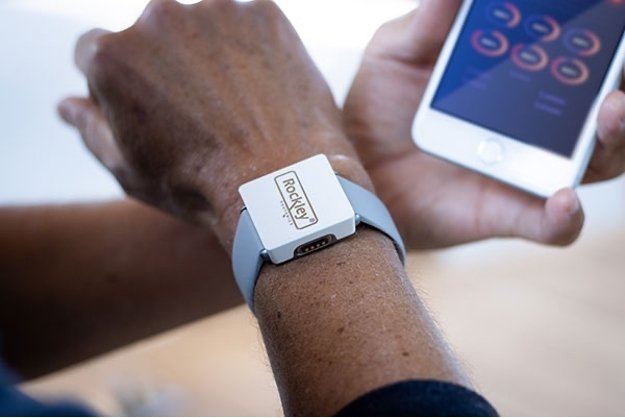Increased consumer attention on health issues is fueling double-digit growth in the wearable market
January 12, 2022

Semiconductor advances are driving new medical smartwatch sensors with improved capabilities. Rockley Photonics’ new sensing platform, unveiled at CES 2022, uses a spectrophotometer chip to emit infrared lasers that pass through the skin.
The company is working with a dozen unnamed consumer electronics companies including six it says are top 10 players in the wearable market. In addition, it has set up research projects with five medical device companies.
Wearable health care devices like smartwatches typically combine LED and PPG sensors to identify body signals that might indicate there’s a problem — including heart rate, breathing, oxygen saturation levels, electrocardiogram activity or sleep patterns. Fitbit, for instance, has a PPG sensor installed to track blood flow directly from the user’s wrist.
By combining these sensors with its photonics-based solution, Rockley’s product is expected to pick up additional physiological measurements like blood oxygen, glucose, lactate and alcohol levels.
Increased consumer attention on health issues is fueling double-digit growth in the wearable market year-on-year, Rockley says, with annual smartwatch shipments set to surpass 130 million units by 2025.
The new chip houses multiple photonic lasers offering higher resolution, accuracy and range than LED-based modules. Company officials say the product is 1,000 times more precise, with 1 million times better resolution, and the lasers themselves can travel 100 times further. AI and machine learning software in the cloud pick up insights from the sensor data.
Rockley said its photonics-based sensors penetrate multiple layers of the dermis as well as interstitial fluids that it contains. This enables them to avoid environmental disturbances and wearer discomfort.
The company claims LED-based wearable trackers on the market today suffer significant drawbacks because they’re restricted to a narrow light spectrum band and have low signal-to-noise ratios which hamper accuracy.
“Photonics is the breakthrough technology enabling manufacturers to miniaturize spectrophotometer functionality that was previously available only in benchtop clinical equipment,” said Rockley Photonics’ chief executive and founder Dr. Andrew Rickman., “Using ‘clinic-on-the-wrist’ technology has the potential to help consumers and clinicians to detect diseases earlier, improve wellbeing and fitness while focusing on preventive health care.”
About the Author(s)
You May Also Like



.png?width=300&auto=webp&quality=80&disable=upscale)


.png?width=300&auto=webp&quality=80&disable=upscale)